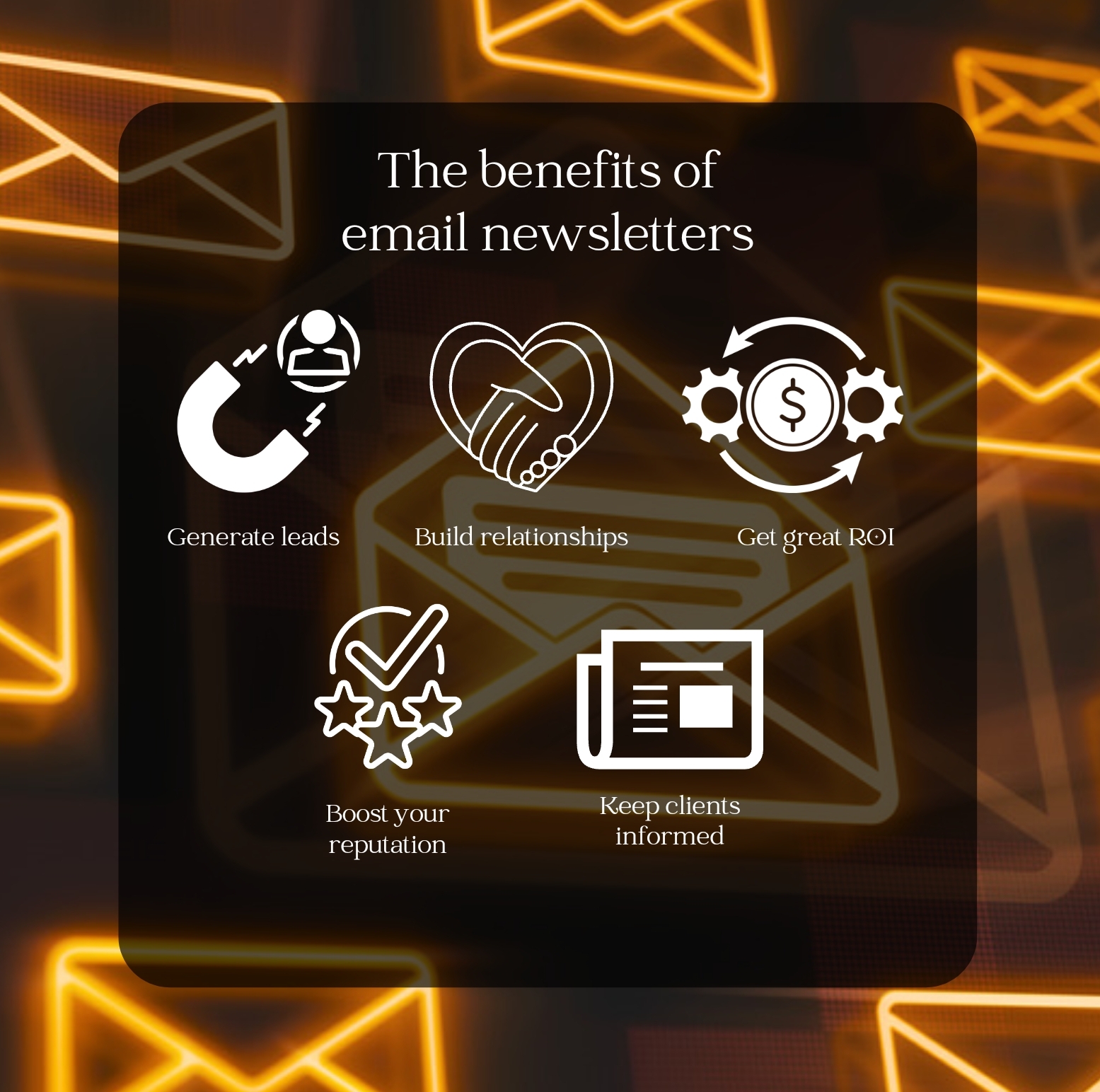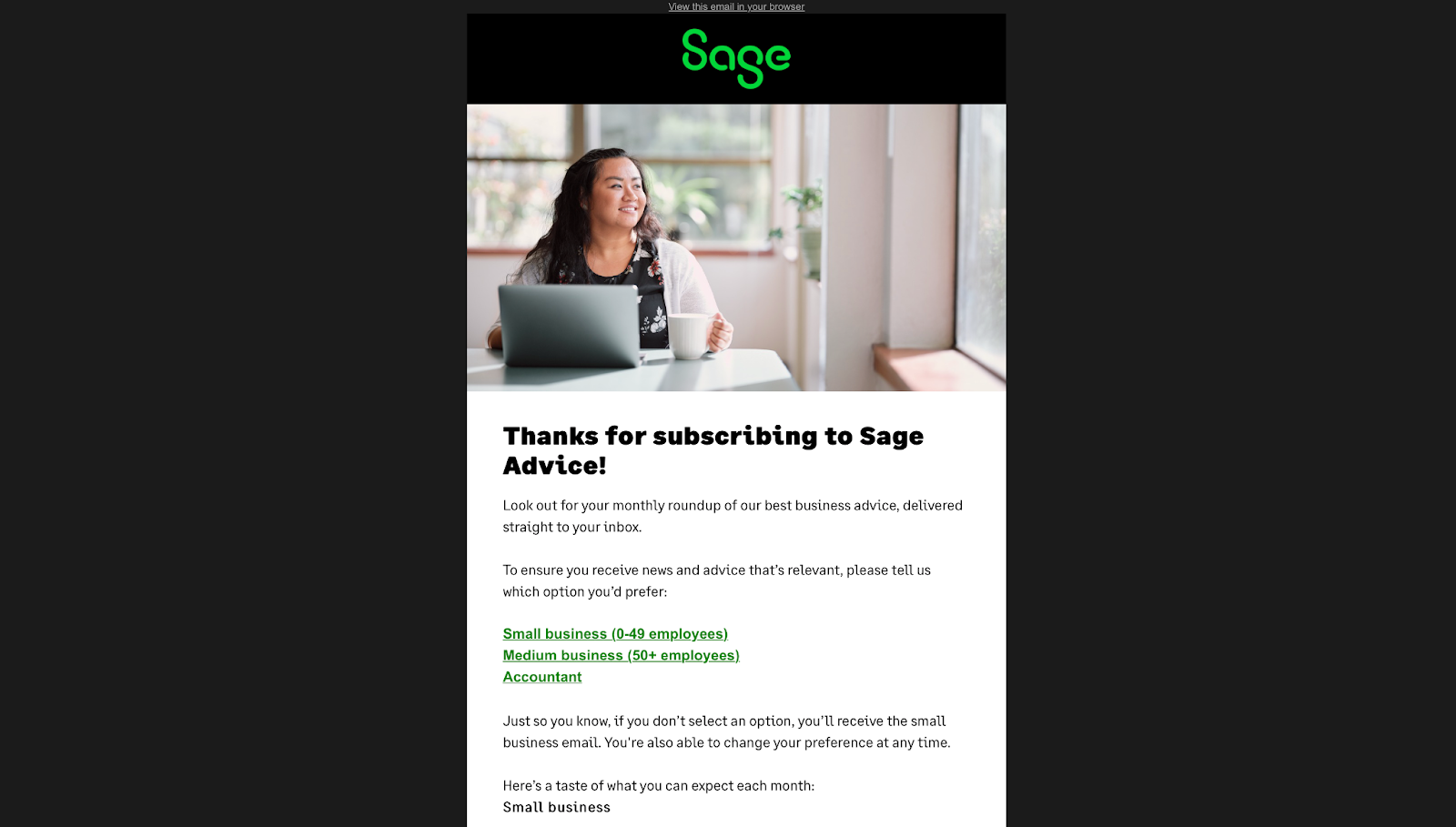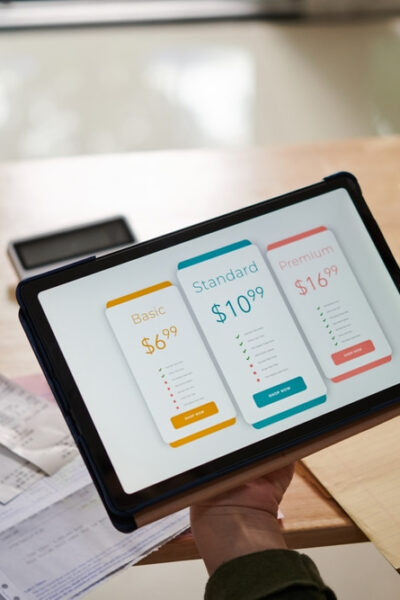Email newsletters are a powerful tool for any brand — and that includes those in the financial sector. They are easy to create, give fantastic return on investment (ROI) and help keep your audience engaged.
Many brands have already reaped the benefits of publishing a regular newsletter. The founders of financial media company MarketBeat, for example, provide their subscribers with valuable information on the stock market and generate $25.6 million per year in revenue.
Business newsletter Morning Brew is another success story, accruing more than 4 million subscribers since its inception.
Given that newsletters can do a lot for your brand, let’s take a look at some finance newsletter ideas you can use to capture your audience’s attention and gain more subscribers.
Can Financial Newsletters Improve Your Bottom Line?
Financial newsletters are an efficient way of capturing your audience’s attention through engaging content. For a start, they’re easy to produce and enjoy an average open rate of 21.33%. All you need is a decent writer, simple template and basic email marketing tools.
Email is a hugely effective channel with fantastic ROI. By using email to distribute your newsletter, you can reap some big rewards.
Email newsletters can:
- Generate leads
- Build relationships
- Boost your reputation
- Keep readers informed.
And they do all of this for a low cost, meaning great ROI and improved visibility for your brand.
The Importance of Newsletters in Finance
Chances are you receive plenty of personal newsletters from brands you’ve shopped with or online businesses whose services you use. So, why should financial brands and publishers also send out newsletters?
Let’s take a look at some of the key benefits.
Improves Communication and Engagement
When subscribers see your name in their inbox, they know that you want to stay connected. And if you strike the right tone, your newsletter could become a reassuring presence.
Emails have the potential to make readers feel connected to you and your brand. This, in turn, improves your relationship with your audience while boosting your brand’s visibility and reputation.
Makes Financial Topics More Interesting
Let’s be honest: financial topics can sometimes come across a bit dull. But an effective newsletter is the perfect platform to help you convey financial information in a more exciting and engaging way.
This isn’t just valuable for getting finance concepts across to your audience, it also makes people more likely to seek out your content in the future. If audiences know that you can put an interesting spin on topics such as filing taxes and making investments, they’re more likely to make you their first stop for financial advice.
Converts Leads With Informative Content
Often, subscribing to a brand’s newsletter is one of the first things a potential customer will do when researching products and services or seeking out information on a specific subject. This makes your newsletter an invaluable method for nurturing leads, with 31% of B2B companies (PDF download) using it to do just that.
For example, perhaps you offer free online downloads and guides, as Sage does with its Making Tax Digital (MTD) content.
When people download the content from your website, they are given the option to opt in to your newsletter. In encouraging sign-ups, you could turn a prospective user who’s simply looking to learn more about MTD into a paid customer that subscribes to your services.
6 Finance Newsletter Ideas
When it comes to engaging with readers through a newsletter, the results can only be as effective as the content. With that in mind, here are some ideas to make your finance newsletter a success.
1. Curate Industry News and Articles
One of the main functions of a newsletter is to keep your audience up-to-date with what’s going on in the finance world. So, you could use your newsletter to curate industry news. The more relevant to you and your customers, the better.
2. Interview Market Leaders and Company Stakeholders
Interviews make for interesting content. Audiences love to learn more about the people behind the brands, and these people often have interesting insights and advice.
You will probably find that people are happy to be interviewed for your newsletter, as it raises their own profile. So, don’t be shy about reaching out.
3. Use Product Reviews and Case Studies
Product reviews and case studies are an effective way to build trust in your brand. They provide readers with valuable information and demonstrate your expertise in the industry.
4. Initiate Tax Day Newsletters
Tax season is a big deal in the world of finance. By sending out tax day newsletters, you can guide your audience through the process, making for a smoother and less stressful experience.
There are plenty of topics to cover in tax day newsletters, no matter who your audience is. For example, you could offer tips on MTD for accountants for readers considering expanding into the UK market or break down complicated tax concepts for small business owners.
5. Share Monthly Accounting and Tax Tips
Accounting and taxes are likely to be among the most important topics for finance newsletter audiences.
So, give your audiences what they want with useful content that informs, inspires and engages them. If you’re worried about running out of content, space your tips out by offering one or two a month, perhaps as part of a running series.
6. Use Humor
Injecting some humor can make topics more relatable and fun. Plus, it has the added benefit of making your brand voice entertaining, engaging and endearingly human.
That said, people want to know that their money is in serious, responsible hands and the wrong kind of humor can give the opposite impression. Just try to strike the right balance.
Best Practices for Financial Advisor Newsletters
1. Identify Relevant Content
Relevance is key for any communication, and your newsletter is no different. Simply put, you must curate content that is relevant to your audience’s needs and interests.
Audience research will help you to pin down the topics and themes that most interest your subscribers. Be sure to keep your finger on the pulse of what’s relevant, though, as audiences (and current events) constantly change.
2. Keep It Concise and Organized
People skim newsletters while they’re on the go. Yours needs to be concise to get the relevant information across quickly. It also needs a well-organized design with the most important information immediately drawing the eye.
3. Use Automation
Automation makes email marketing a whole lot easier. It can do everything from personalizing your emails to gathering and analyzing vital engagement data. The right automations can take all the pain out of your email marketing strategy, and deliver a great user experience on both sides of the inbox.
4. Keep a Consistent Schedule
It’s important that people know when your newsletter will land in their inbox. It shouldn’t appear at random times, nor should there be a long gap between emails. So, pick a consistent sending schedule and stick to it.
5. Share and Promote Your Newsletter
It goes without saying that to gain subscribers, you need to share and promote your newsletter. You could do this on your blog, website or social media channels.
Final Thoughts
Newsletters are a simple and effective way to build engagement and strengthen relationships with your brand.
With the right team and techniques, your newsletter could transform even the dullest finance topic into something informative, valuable and exciting. What’s more, it could boost your bottom line in the process.
So, if you haven’t done so already, make 2024 the year you launch your finance newsletter.
Disclaimer: The views, opinions and ideas expressed in this post belong to the author/s and do not necessarily reflect those held by State of Digital Publishing.












